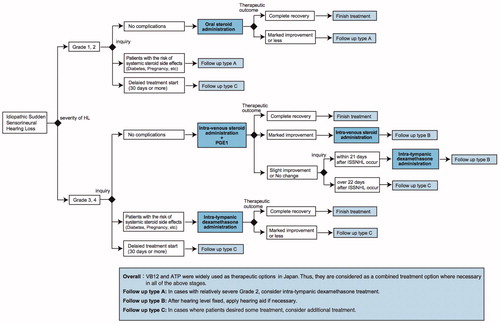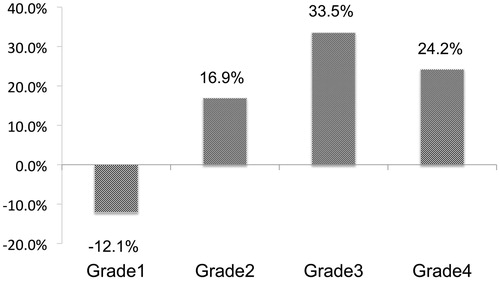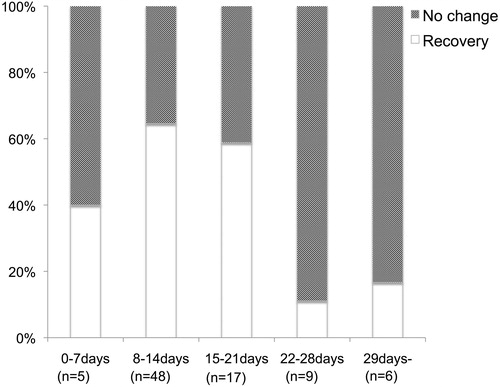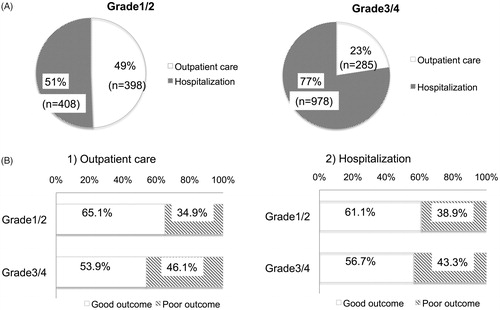Figures & data
Table 1. Summary of the nationwide epidemiological surveys on SSNHL in Japan before 2014.
Table 2. Summary of the epidemiological survey in 2017.
Table 3. Criteria for the diagnosis of idiopathic SSHNL.
Table 4. Criteria for grading hearing loss in SSNHL.
Table 5. Hearing improvement criteria for SSHNL as defined by the Ministry of Health and Welfare in Japan.
Figure 1. Treatment algorithm for idiopathic sudden sensorineural hearing loss based on an epidemiologic survey of a large Japanese cohort.

Figure 2. Relationship between the duration from onset of idiopathic SSNHL and hearing recovery (criteria shown in ). The rate of a good improvement (complete recovery or marked improvement) gradually decreased with the increase in the duration from onset. In the 29 days or more group, the criteria of “no change” reached over 75%.

Figure 3. Result of IT steroid therapy as salvage therapy for each grade of hearing loss. The average percent hearing improvement was calculated using following equation: percent hearing improvement = (HLpre-salvage – HLfinal)/(HLpre-treatment – HLcontra). The IT steroid injection was more effective in patients with severe hearing loss (Grade3/4).

Figure 4. Relationship between the duration from onset of idiopathic SSNHL and IT steroid therapy as salvage therapy. Recovery means a PTA improvement of 10 dB or more from the start of salvage therapy, and no recovery means a PTA improvement of under 10 dB. The treatment effect of IT corticosteroids as a salvage therapy was limited in the patients treated over 21 days from the onset of SSNHL.

Figure 5. Comparison between outpatient care and hospitalization for SSNHL patients. (A) The difference in the selection of outpatient care or hospitalization between grade1/2 and grade3/4 patients with SSNHL. (B) Results of treatment in patients with SSNHL. The upper row of the graph shows the results for patients treated by outpatient care, and the lower row shows the results for patients treated in hospital.

